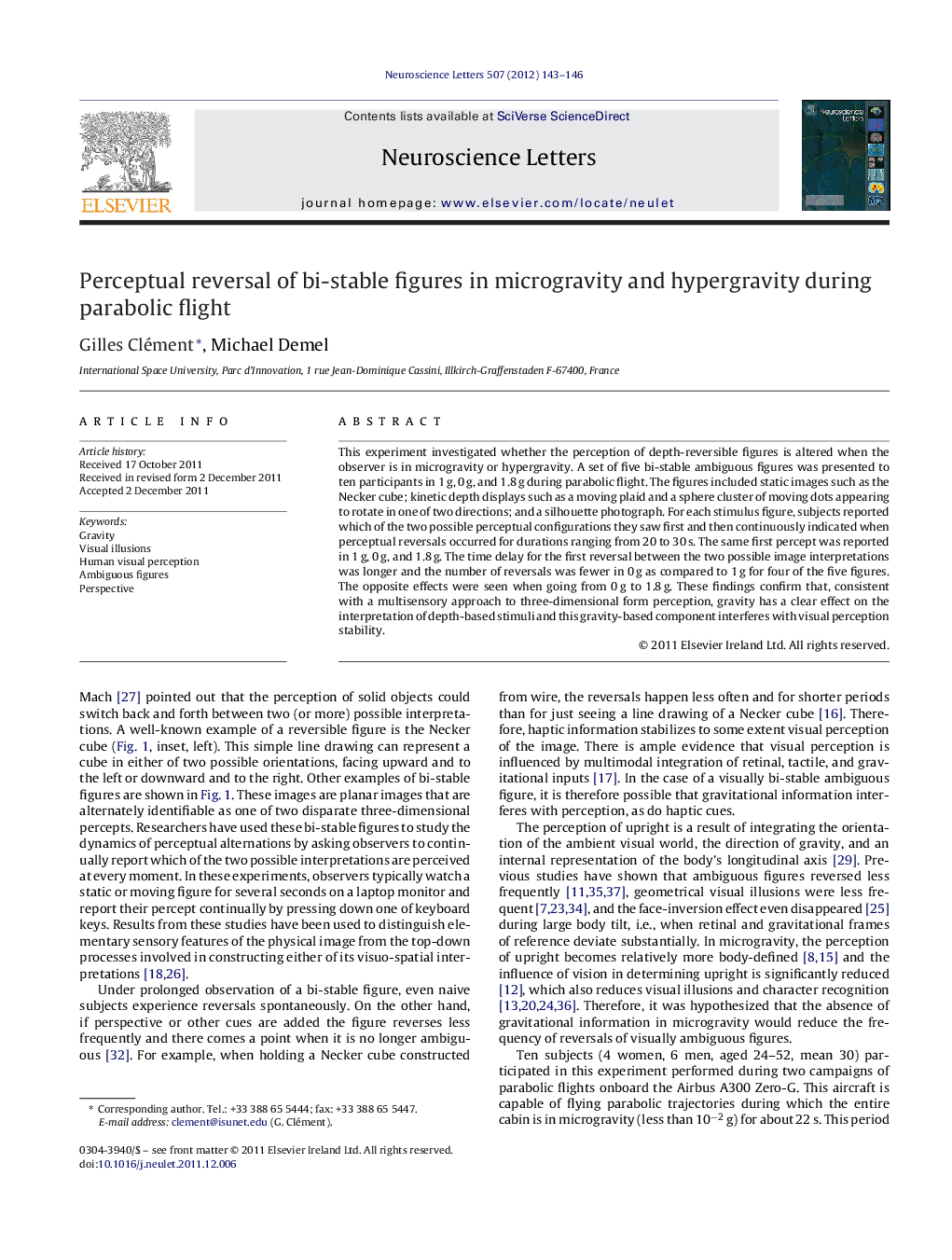| Article ID | Journal | Published Year | Pages | File Type |
|---|---|---|---|---|
| 4344801 | Neuroscience Letters | 2012 | 4 Pages |
This experiment investigated whether the perception of depth-reversible figures is altered when the observer is in microgravity or hypergravity. A set of five bi-stable ambiguous figures was presented to ten participants in 1 g, 0 g, and 1.8 g during parabolic flight. The figures included static images such as the Necker cube; kinetic depth displays such as a moving plaid and a sphere cluster of moving dots appearing to rotate in one of two directions; and a silhouette photograph. For each stimulus figure, subjects reported which of the two possible perceptual configurations they saw first and then continuously indicated when perceptual reversals occurred for durations ranging from 20 to 30 s. The same first percept was reported in 1 g, 0 g, and 1.8 g. The time delay for the first reversal between the two possible image interpretations was longer and the number of reversals was fewer in 0 g as compared to 1 g for four of the five figures. The opposite effects were seen when going from 0 g to 1.8 g. These findings confirm that, consistent with a multisensory approach to three-dimensional form perception, gravity has a clear effect on the interpretation of depth-based stimuli and this gravity-based component interferes with visual perception stability.
► Effects of various gravity levels during parabolic flight on five ambiguous figures. ► Time for first reversal longer in 0 g and shorter in 1.8 g than in 1 g. ► Less reversal in 0 g and more reversals in 1.8 g than in 1 g. ► Gravity influences perspective and interferes with visual perception stability.
